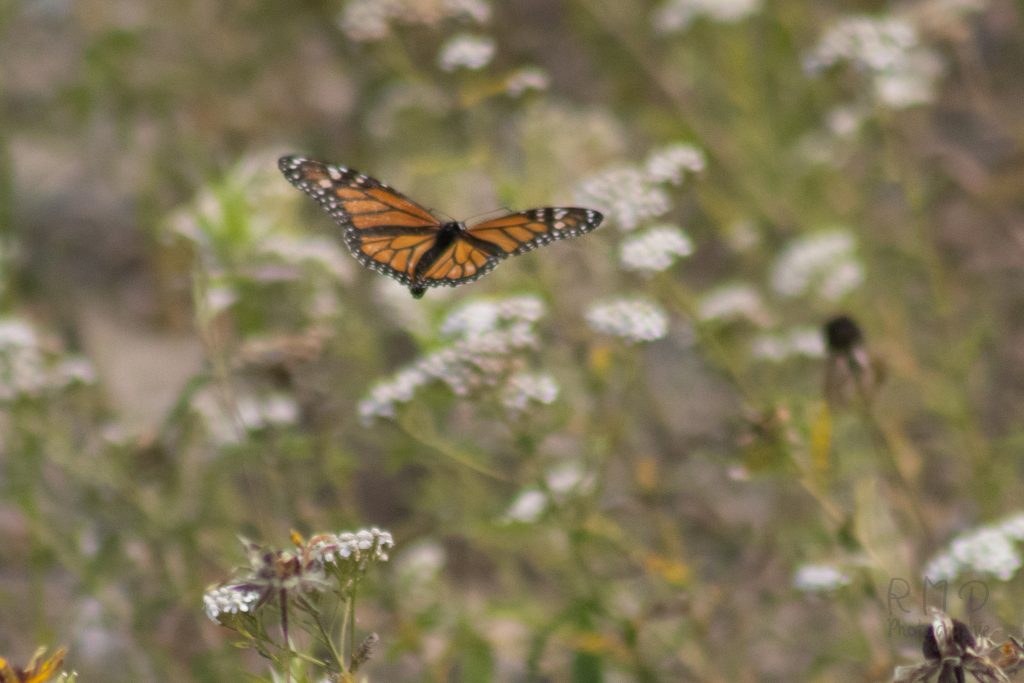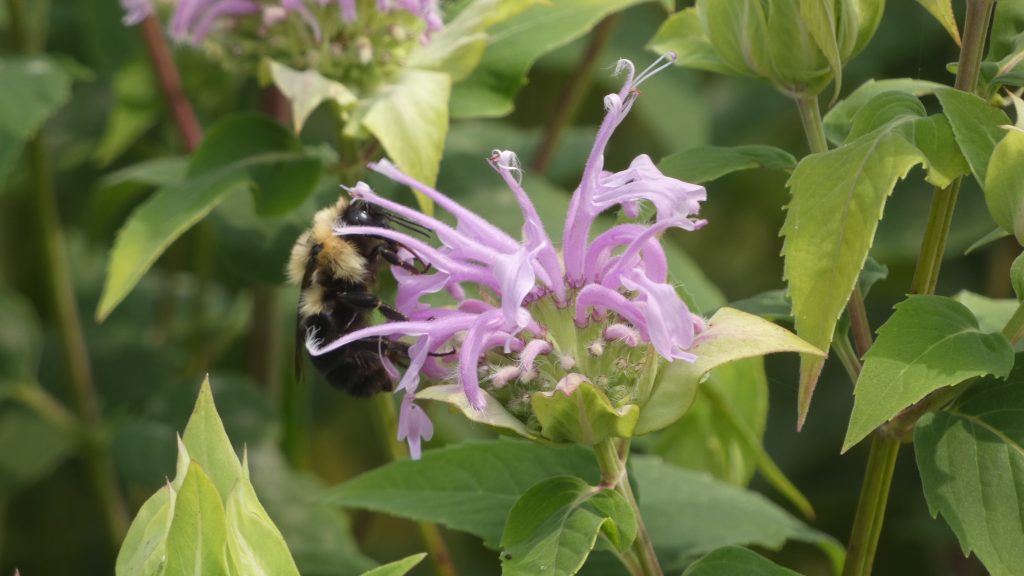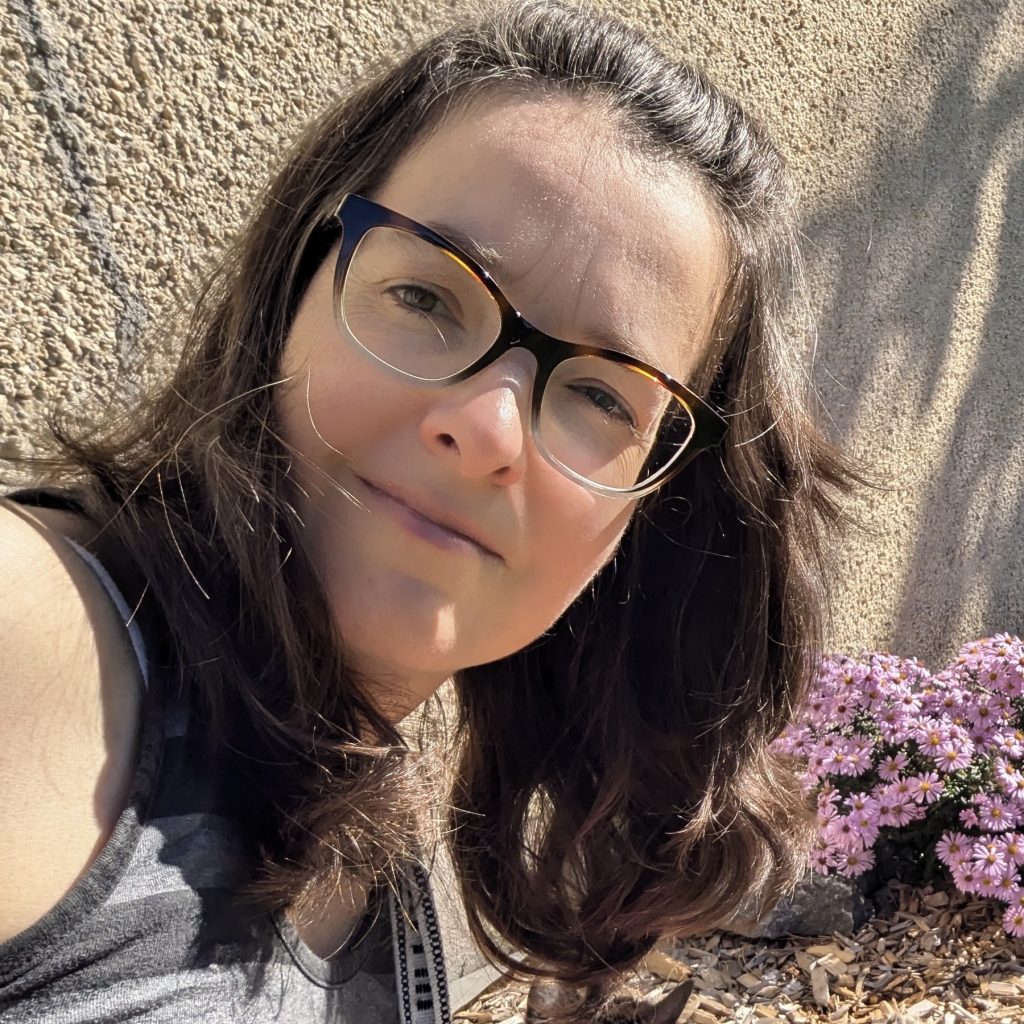In this month’s newsletter:
· Latest work on the dunes, the mural, and an upcoming fund-raising activity
· What to spot at the dunes
· How to donate to BCI and Friends of Pinhey Sand Dunes
· New executive and outstanding positions
LATEST AT THE DUNE
By Karen Lane
There has been a lot going on at the Pinhey Sand Dunes recently, it’s hard to keep up. Work continues apace on weeding and watering, including replanting smaller Spotted Beebalms (Monarda punctuate) across Dune #2.
We have also been shifting sand to make a crucial water run-off cannel at Dune #2 and to build smaller rippled dunes so tiger beetles can burrow. Notably, we have built up the large dune along the main path at Dune #2 and the goal is to raise it by another 30 centimeters or so.

We are also taking advantage of the hot weather to sift sand with a view to creating a hard, clean top layer of sand that will be more resilient to the wind we expect in coming months. You will also have noticed a lot more signage around the dunes to deter people from walking across the dunes and damaging flora and fauna, which is an ongoing problem.
But there is a lot more going on.
Mural fully funded: The Dunes committee secured C$1,000 in National Capital Commission funding to enable us to complete the 7-panels of murals for two sides of the Dune #2 Shipping Container. Painting started August 21 and the project will be completed by September 20 for an estimated 100 hours of artistry. We are hoping to get Team Depot – Home Depot’s volunteer force – to help with installation. Anyone with connections to Home Depot, please contact Aaron@biodiversityconservancy.org or onsite.
UPCOMING EVENT: Fund raising on September 7 at Dune #2
Join us with friends and family for a fund-raising event from 10:00 am on September 7 at Pinhey Sand Dunes #2 Shipping Container. Activities comprise a volunteer-led guided tour from 10:15, a live painting demonstration at 10:45, and a silent auction of 10 Pinhey Sand Dunes flora and fauna artworks at 10:45. Funds will be used for ongoing outreach and education activities. The raindate is September 14. Contact Aaron@biodiversityconservancy.org for questions.
THINGS TO SPOT AT THE DUNES AROUND NOW
By Karen Lane
Ghost Tiger Beetle dens: Ghost tiger beetles (Ellipsoptera lepida) have been making dens in the new dune mounds at Dune #2 site. Look out for little holes dotted all over the surface. The beetles need to burrow deep into the sand as the larvae need two undisturbed years to develop and need to avoid the winter ice and low temperatures on the surface.


Monarch butterflies and their caterpillars: Keep an eye out for the Monarch caterpillars and butterflies (Danaus plexippus) particularly on the various host milkweed plants – with their small pink, white or orange clusters of flowers) dotted around both sides of the dunes at Dune #2. Females lay their eggs on the milkweed plants and caterpillars feed on them as they grow. We don’t seem to have as many this year as in 2024, unfortunately, so are protecting some of them under covers.
Bees and wasps: Various types of bees have been buzzing around our many blooms which is great as they are fabulous pollinators. Most visible is the solitary bee which come in many shapes and sizes and which, as the name suggests, don’t live in hives or colonies but in nuclear families. They don’t sting unless threatened as they are busy feeding the family. Also watch out for the red and black wasps like the Great Black Digger Wasp (Sphex pensylvanicus) around the Spotted Beebalm. All are large but unusually the female is bigger than the male. They build underground nests.

WELCOMING MORE NEW EXECUTIVE VOLUNTEERS
by Berit Erickson
In August, we welcomed 3 more Friends executive volunteers:

Treasurer: Geneviève Larouche
“I’m a biologist who discovered the dunes in May 2022, during the annual Jane’s walk. After Iearning the value of protecting this unusual environment, I started volunteering. I’ve performed tasks such as weeding, planting, and French-language presentations and translations. At home, I am currently creating a mini butterfly and pollinator sanctuary around the garden. I really like nature, including insects, and my passion is birds. Being part of Friends of Pinhey Sand Dunes gives me the opportunity to spend time in nature, meet new people, learn and share new things about ecology, and most importantly, provide long-term conservation to the sand dunes and Sanctuary for Butterflies and Pollinators. Contributing to this common mission and seeing the concrete results is a very rewarding experience for me.”

Bookkeeper: Megan Beverley
“I recently joined BCI/Friends of the Pinhey Sand Dunes as a volunteer bookkeeper. I’m an economist by training and currently work in the federal government. I recently completed my QuickBooks ProAdvisor certification and I’m excited to use these skills to support biodiversity and conservation more directly. Outside of work, I love hiking, camping, skiing, and paddleboarding, and I’m passionate about protecting the natural world. I look forward to keeping the numbers organized and pitching in wherever I can to support the team!”

Volunteer Recruiter/Coordinator: Ivy Le
Ivy is a Human Resource Management graduate from Western University who loves bringing people together through community and volunteer initiatives. With experience in recruitment and event coordination, she is excited to welcome new volunteers and help them feel connected to the Pinhey Sand Dunes community while supporting conservation efforts.
Looking for more volunteers: Dune Educator volunteer job description
Biodiversity Conservancy International (BCI) is looking for a Dune Science Educator to manage our school field trip program. This position is ideally suited for a person with a biology background who is interested in teaching students about the Pinhey Sand Dunes and Sanctuary for Butterflies & Pollinators. The educator will be responsible for the following tasks:
- Reach out to public schools in Ottawa-Carleton to promote BCI’s on-site Education Program on rare inland sand dune habitats, biodiversity, and this unique ecosystem. The study site will be Pinhey Sand Dunes, site #2.
- Schedule on-site education sessions for participating school classes. Field trips are available to all educational levels (from elementary to post-secondary), and also suitable for organizations and community groups.
- Book school buses for transportation.
- Work with volunteer entomologists/naturalists, conduct on-site teaching and interactive dune tours to observe dune biodiversity (plants and animals, mostly insects and spiders, and butterflies, bees, wasps, and other pollinators).
The new Dune Science Educator will need several on-site education sessions to learn and become familiar with the program.
